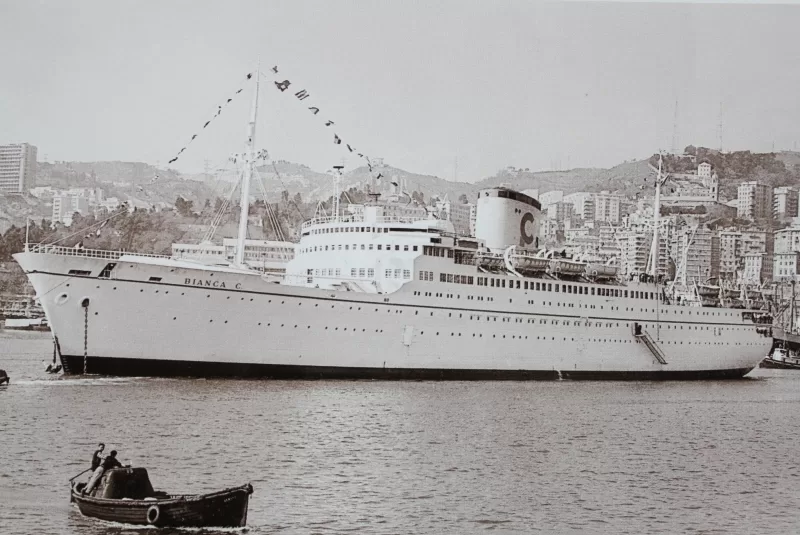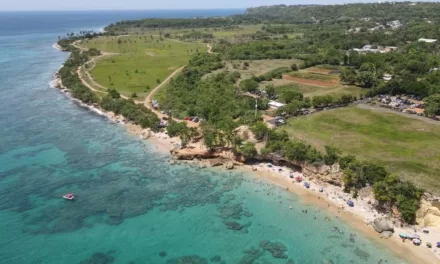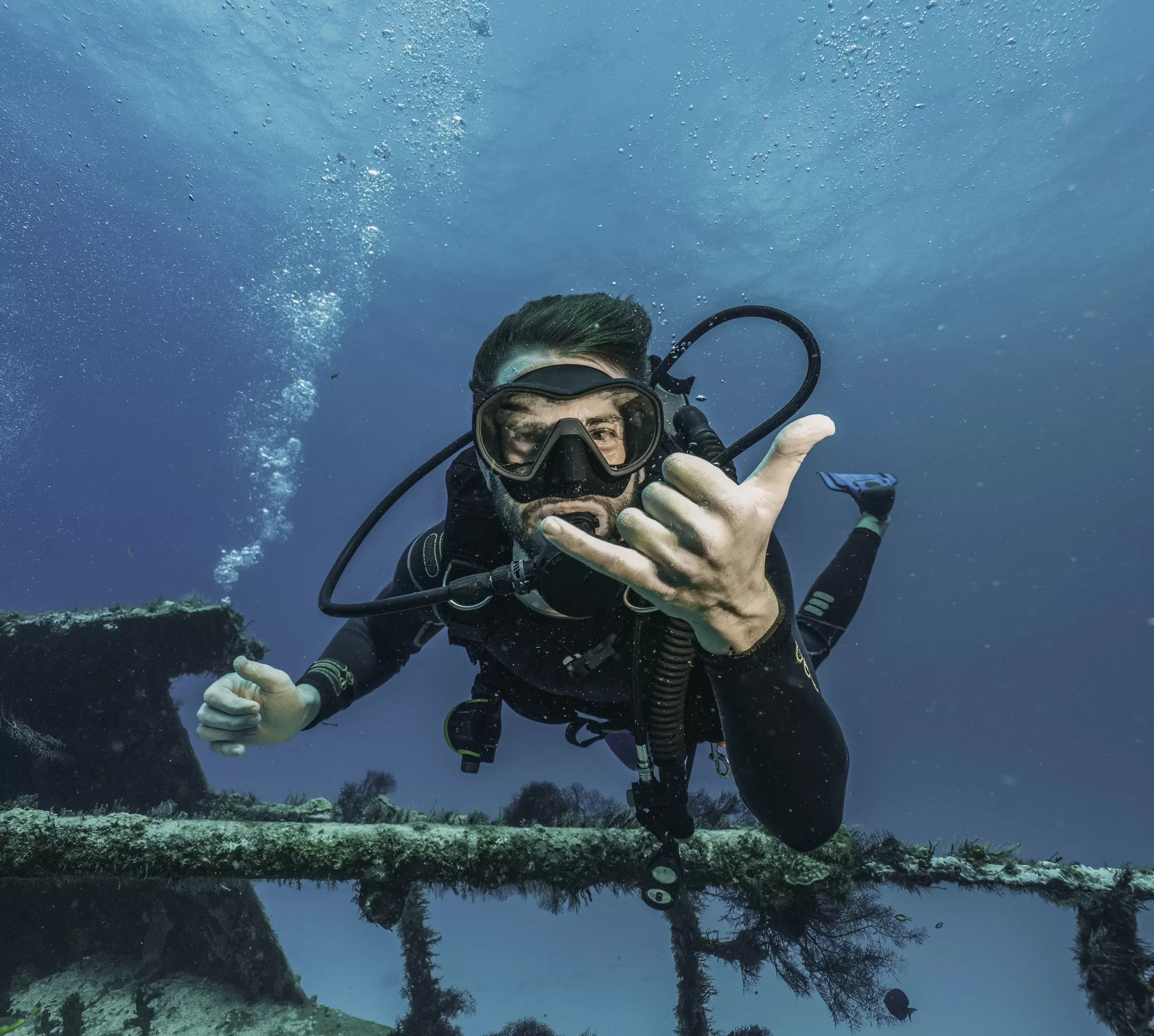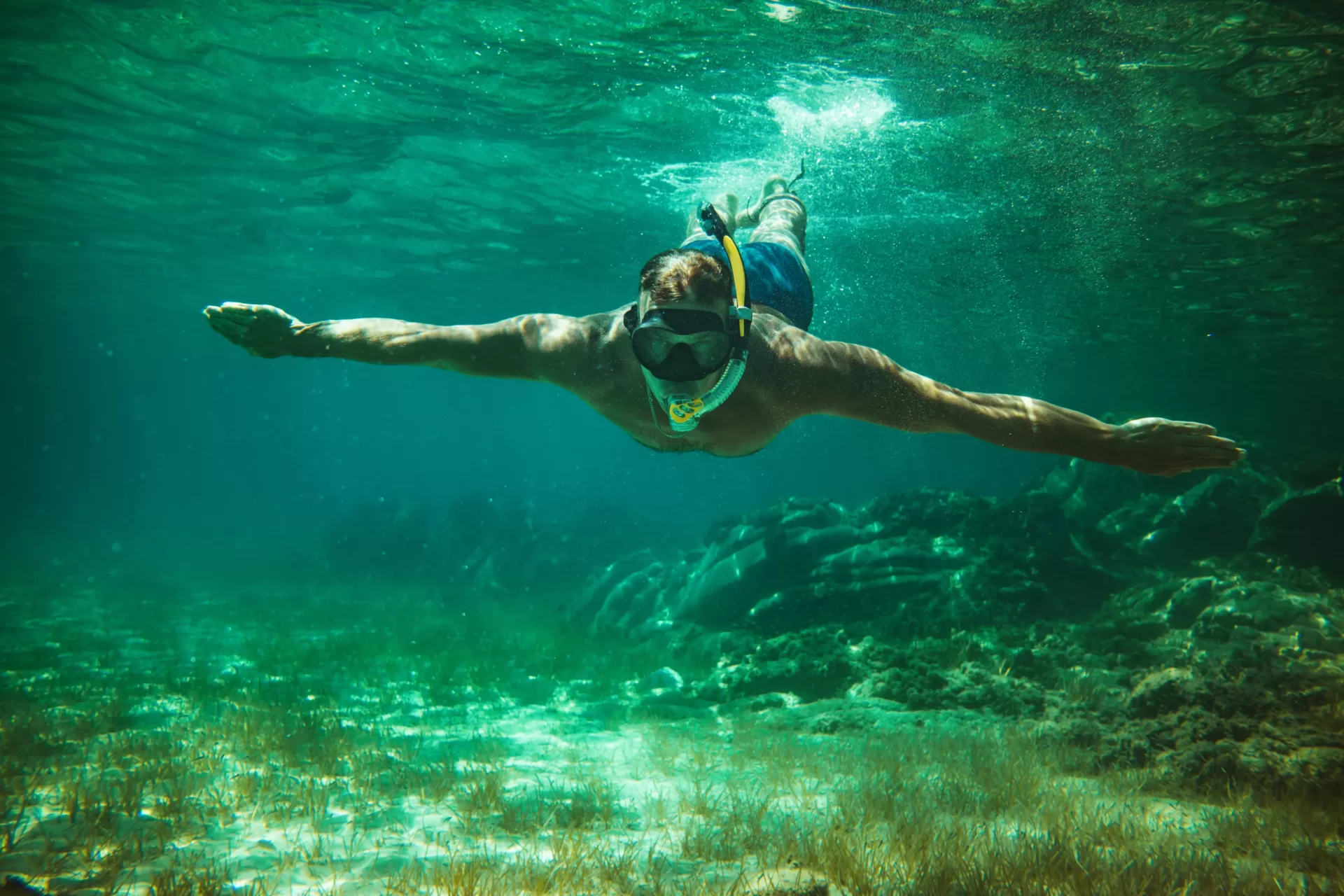Introduction
Welcome to the enigmatic world of Bianca C, often hailed as the “Titanic of the Caribbean.” This majestic shipwreck, lying off the coast of Grenada, beckons divers from around the world to explore its sunken grandeur. The Bianca C, with its rich history and sprawling underwater presence, offers a dive experience like no other, blending adventure with a haunting glimpse into the past.
Once a luxurious cruise liner, the Bianca C met its watery fate in 1961, transforming over time into an iconic dive site. Today, it stands as a colossal underwater monument, capturing the imagination of divers with its sheer size and fascinating story. Diving into the depths to visit this remarkable wreck is not just a dive trip; it’s a journey into a submerged chapter of maritime history, offering both thrills and insights into a bygone era.
The Story of Bianca C
The Bianca C’s story is as dramatic as the underwater experience it offers. Originally launched as the Marechal Petain in 1944, it was a luxury liner that epitomized elegance and comfort. After several changes in ownership and names, it finally became known as Bianca C, operated by the Costa Line.
The vessel’s final chapter began in October 1961, while anchored in St. George’s Harbor, Grenada. A fire broke out in the engine room, leading to a massive explosion. Despite heroic rescue efforts, the fire raged uncontrollably, and two days later, the Bianca C sank to its final resting place.
This tragic event, however, birthed a new era for the ship. Settling at a depth of over 160 feet, Bianca C became one of the largest and most intriguing shipwrecks accessible to divers. The story of its sinking, the rescue efforts by the locals, and the transformation into an underwater spectacle, all contribute to the mystique that surrounds this legendary wreck. Now, it’s not just a site for diving enthusiasts but also a monument commemorating the resilience of the ship and the spirit of those involved in the aftermath of the tragedy.
Preparing for Your Dive to Bianca C
Diving the Bianca C is an exhilarating experience, but it’s essential to be well-prepared and equipped for this advanced dive. Here’s what you need to know before you take the plunge:
Necessary Certifications and Experience Levels:
- Advanced Certification: Due to its depth and complexity, diving Bianca C is recommended for advanced divers. A PADI Advanced Open Water certification or equivalent is typically required.
- Deep Diving Experience: Experience in deep diving is crucial due to the depth of the wreck, which lies between 85 to 130 feet (26 to 40 meters).
- Specialized Training: Consider additional training like Wreck Diver or Deep Diver specialty courses to enhance your skills and safety.
Equipment and Gear Recommendations:
- Standard Scuba Gear: This includes a regulator, buoyancy control device (BCD), mask, fins, and a wetsuit or drysuit depending on personal preference and water temperature.
- Dive Computer: Essential for monitoring depth, time, and decompression limits.
- Dive Light: A must-have to explore the shadowy areas of the wreck and bring out the vibrant colors of marine life.
- Safety Gear: Always carry a surface marker buoy (SMB) and a whistle or other signaling device for safety.
The Journey to Bianca C
Location and Access:
- The Bianca C wreck is located just off the coast of Grenada, near St. George’s, the island’s capital.
- Access is typically via boat, with numerous dive operators in Grenada offering trips to the site. The boat ride to the wreck site offers stunning views of the Grenadian coastline.
Dive Site Conditions:
- Depth: The wreck lies at a depth of about 85 to 130 feet (26 to 40 meters), making it an advanced dive site.
- Visibility: Visibility around the wreck can vary but is generally good, ranging from 60 to 100 feet (18 to 30 meters), allowing divers to take in the full majesty of the wreck.
- Currents: The currents can be strong at times around the Bianca C, so it’s important to be prepared and follow your guide’s instructions.
- Water Temperature: The water temperature is typically warm, around 78 to 82°F (25 to 28°C), making for comfortable diving conditions.
Preparing properly for a dive to Bianca C and understanding the dive site conditions are key to a safe and enjoyable experience. This legendary wreck, with its rich history and vibrant marine life, offers an unforgettable adventure for those ready to explore its depths.
Exploring the Titanic of the Caribbean
Diving into the Bianca C is like exploring a submerged giant, a thrilling experience that encapsulates both the grandeur and tragedy of this once majestic cruise liner. Here’s what divers can expect:
Exploring the Decks and Structure:
- Imposing Size: The first thing that strikes divers is the sheer size of the Bianca C. At over 600 feet long, it’s a colossal structure to navigate.
- Swim-Throughs: Adventurous divers can explore various parts of the wreck, including swim-throughs in certain areas. It’s a surreal experience to glide through what were once luxurious cabins and grand halls.
- The Bow: The bow of the ship, still largely intact, is a popular highlight. Here, divers can truly appreciate the scale of this massive vessel.
Notable Features and Highlights:
- The Swimming Pool: An eerie yet fascinating spot is the ship’s swimming pool, a ghostly reminder of the ship’s luxurious past.
- Marine Growth: Over the years, coral and sponges have colonized the wreck, creating a mesmerizing display of colors and textures.
- Historical Relics: Scattered across the wreck are various artifacts from the ship’s heyday – a haunting yet captivating sight.
Marine Life Around Bianca C
The Bianca C wreck is not just a historical landmark; it’s a thriving hub of marine life, playing a crucial role in Grenada’s underwater ecosystem.
Types of Marine Life:
- Tropical Fish: The wreck is teeming with a variety of tropical fish, adding bursts of color to the ocean’s blue.
- Barracudas and Groupers: Larger species like barracudas and groupers are commonly spotted around the wreck, patrolling their underwater domain.
- Macro Life: For those interested in macro photography, the wreck’s nooks and crannies are home to smaller creatures like shrimp and nudibranchs.
Role as an Artificial Reef:
- Over time, the Bianca C has transformed into an artificial reef, providing habitat and breeding grounds for various marine species.
- This transformation has been beneficial for the local marine ecosystem, contributing to biodiversity and attracting divers and marine biologists alike.
- The presence of this artificial reef also highlights the importance of wrecks in ocean conservation, serving as a reminder of how man-made structures can positively impact the marine environment.
Diving the Bianca C is a journey through a vibrant underwater world, rich in history and marine life. As divers explore this Titanic of the Caribbean, they are treated to an unforgettable spectacle of nature’s resilience and beauty, showcased within the remnants of human history.
Challenges and Rewards of Diving Bianca C
Diving the Bianca C in Grenada is an extraordinary experience, but it comes with its own set of challenges that divers must be prepared to face. Here’s what to expect:
Technical Challenges:
- Depth: One of the primary challenges is the depth of the wreck, lying between 85 to 130 feet. This requires good buoyancy control and awareness of nitrogen narcosis risks.
- Currents: The site can experience strong currents, demanding excellent swimming skills and situational awareness from divers.
- Size of the Wreck: Navigating such a large wreck can be daunting and requires careful planning to ensure a safe dive, especially for those interested in penetration diving.
Unique Rewards:
- Historical Connection: Diving Bianca C is like touching a piece of history. The experience of exploring this once-grand ocean liner is unparalleled.
- Marine Life: The abundance of marine life that has made the wreck its home offers a spectacular display, enhancing the dive experience.
- Photography Opportunities: For underwater photographers, the wreck provides a unique backdrop with its combination of historical artifacts and vibrant marine ecosystems.
Conservation and Respect for the Wreck
The Bianca C is not just a dive site; it’s an important piece of history and a valuable part of the marine ecosystem. As such, it demands a high level of respect and conservation from those who dive it.
Importance of Preserving Historical Wrecks:
- Historical wrecks like the Bianca C are underwater museums, offering insights into our past. Preserving them helps maintain this connection to history.
- They also play a critical role in marine ecosystems as artificial reefs, supporting a diverse range of marine life.
Best Practices for Responsible Wreck Diving:
- Look, Don’t Touch: Avoid touching or taking anything from the wreck. This helps preserve the site for future generations of divers.
- Mind Your Fins: Be cautious of your fins to avoid damaging the coral and marine life that have become part of the wreck.
- Penetration Diving: Only divers with specialized training should attempt to penetrate the wreck, as it can be hazardous and risks damaging the structure.
- Environmental Awareness: Be mindful of the surrounding environment. Avoid actions that could harm the marine ecosystem.
Diving Bianca C is not only about the thrill and adventure of exploring a legendary wreck; it’s also about honoring and conserving a crucial piece of maritime history and the marine life that it supports. By diving responsibly, we ensure that this underwater treasure continues to captivate and educate divers for years to come.
Beyond the Dive: Experiencing Grenada
After surfacing from the depths of Bianca C, there’s much more to explore on the island of Grenada. Known as the ‘Spice Isle,’ Grenada offers a rich tapestry of experiences that extend beyond diving.
Recommendations for Other Activities:
- Explore the Rainforest: Hike through the lush Grand Etang National Park and Forest Reserve, where scenic trails lead to waterfalls and offer glimpses of exotic wildlife.
- Visit Spice Plantations: Grenada is famous for its spices. Tour a nutmeg or cocoa plantation to learn about the island’s spice production and sample fresh, locally-grown products.
- Relax on Stunning Beaches: Unwind on the picturesque Grand Anse Beach, known for its soft white sand and crystal-clear waters.
Highlighting Grenada’s Culture, Cuisine, and Natural Beauty:
- Cultural Experiences: Engage with the local culture by visiting the historic forts, or time your visit to coincide with colorful festivals like the Grenada Carnival.
- Local Cuisine: Delight your taste buds with Grenadian cuisine, which includes dishes like oil down, a flavorful stew made with breadfruit and salted meat.
- Scenic Beauty: Enjoy breathtaking views from places like Fort Frederick and indulge in the island’s natural beauty, from serene beaches to cascading waterfalls.
Conclusion
Diving the Bianca C in Grenada is more than just an underwater adventure; it’s a dive into history, an exploration of a rich marine ecosystem, and a testament to the resilience of nature. This shipwreck, resting in the tranquil Caribbean waters, offers an experience that is both thrilling and humbling, reminding us of the vast and mysterious world that exists beneath the sea.
We encourage divers, both novice and experienced, to explore this magnificent underwater treasure. The Bianca C is not just a dive site; it’s a chapter in maritime history, a sanctuary for marine life, and a unique underwater monument that tells a story of a time long gone. This dive is a must on the bucket list of every diving enthusiast seeking an extraordinary experience.
FAQ
Q: Is a special permit required to dive the Bianca C?
A: No special permit is needed, but divers should be advanced certified due to the depth and complexity of the dive.
Q: Can beginners dive the Bianca C?
A: Due to its depth and potential strong currents, Bianca C is recommended for advanced divers. Beginners might consider other shallower and less challenging sites in Grenada.
Q: What is the best time of year to dive Bianca C?
A: The best diving conditions in Grenada are typically from May to November, when the waters are calmest and visibility is at its best.
Q: Are there any risks of diving the Bianca C?
A: Like any deep wreck dive, there are risks such as strong currents and the potential for nitrogen narcosis. Divers should be well-trained, prepared, and dive with a reputable operator.
Embarking on the adventure of diving the Bianca C in Grenada is not just about exploring a shipwreck; it’s about immersing yourself in a world of historical intrigue and natural wonder. With the right preparation and respect for the underwater environment, it promises to be an unforgettable experience.




